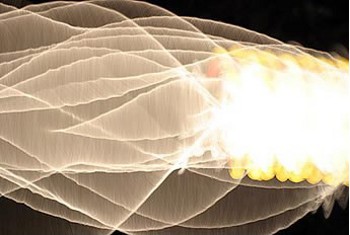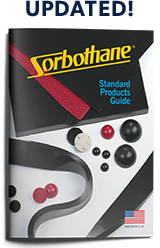Types of Vibration Damping for Machines
 Vibration damping is one of the main technical pieces of getting a machine or system of moving parts to work properly. When vibrations are out of control, they can cause all sorts of problems. The least destructive issues can include excessive noise and slight extra wear and tear on the machine. At its worst, though, excess or uncontrolled vibration can cause a machine to break down much more quickly or to cease working within just a short period of time, if it really works at all.
Vibration damping is one of the main technical pieces of getting a machine or system of moving parts to work properly. When vibrations are out of control, they can cause all sorts of problems. The least destructive issues can include excessive noise and slight extra wear and tear on the machine. At its worst, though, excess or uncontrolled vibration can cause a machine to break down much more quickly or to cease working within just a short period of time, if it really works at all.
Damping vibration is mainly left to viscoelastic substances like Sorbothane, a proprietary formula used in many damping capacities. When vibrations are damped, they are removed from the system in a couple of ways. They can be absorbed into materials that release vibration energy as small amounts of heat energy, or they can be changed to different frequencies that don’t resonate with the pieces of the machine.
There are different ways that viscoelastic substances are often used for vibration damping. Here are a few of the most common uses:
- Unconstrained Damping: This is basically when a pad of Sorbothane is created for moving parts of the machine. The pad sits between the parts that are causing excess vibrations. As the parts move, it conforms to the movement to absorb some of the vibration energy. It then stores some of that energy and releases bits of it as heat energy. Basically, this takes some of the vibration out of the system and keeps the machine from breaking down or making too much noise. Unconstrained damping is by far the simplest way to take care of vibration in machinery.
- Constrained Damping: In this type of vibration damping, the viscoelastic damping material is lined with a thin piece of flexible metal. It works similarly to unconstrained damping, but it’s a little more efficient, if more complicated. Sorbothane can be used for damping in this type of situation, which may be used for machines that need closer control of vibrations.
- Tuned Viscoelastic Damping: When you need very specific damping, it’s normally because you want to keep certain wavelengths of vibrations out of a system. This is often because you need to keep resonant frequencies from seriously throwing a wrench into the workings of your machine or engine. You can do tuned damping with Sorbothane, though this is a more complex process. If you can get it right, though, this is the most effective way to get vibrations to a certain level or frequency within a finely tuned machine.
These types of vibration damping are the most common, and they can all be accomplished with Sorbothane. This substance can be formed in any way you want, and it doesn’t break down with absorbing repeated vibrations, which makes it great for long-term use. If you’re looking to control vibration in a fine engine system or a larger machine, this is a great substance that you might consider using.
Interested in learning more about how Sorbothane can work as a solution for vibration damping for machines? Contact us today to learn more or request a quote.
